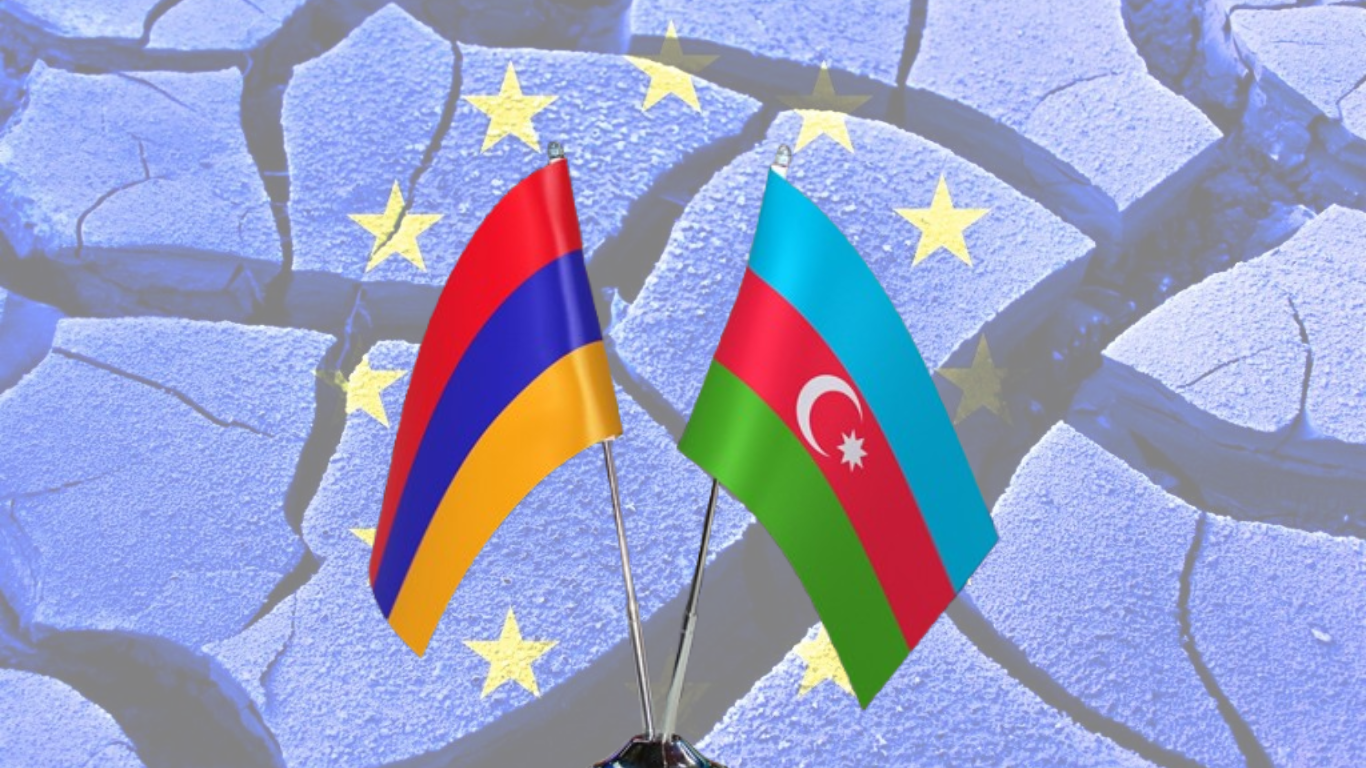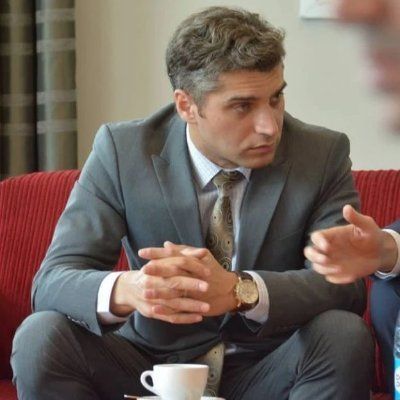Europe watches from sidelines as Baku, Yerevan rewrite rules of peace

Armenia’s recent reciprocal delegation visit to Azerbaijan, coming on the heels of the Azerbaijani delegation’s trip to Yerevan, shows a reality and a turning point that would have seemed unthinkable even a year ago. For decades, relations between the two neighbours appeared frozen stiff, locked in a cycle of hostility that many believed would never thaw. Yet, against all odds, the ice has finally begun to melt. The fact that this breakthrough emerged not from grand international summits, but from direct bilateral engagement, speaks volumes about the new realities of the South Caucasus.
For years, peace initiatives were lost in a maze of multilateral formats, such as trilateral, quadrilateral, and everything in between. Meeting after meeting ended in stalemate. Now, with hindsight, it is clear that these efforts fell flat because they were approached through the wrong lens. External actors, especially Western institutions and European structures, viewed the region through their own interests, agendas, and geopolitical calculations. They acted as though the South Caucasus were a chessboard on which they could advance their own positions. Meanwhile, genuine peace remained out of reach.
The failure of these formats was no mystery, but only a myth sustained by diplomatic inertia. Armenia and Azerbaijan were treated less as sovereign actors capable of resolving their own differences and more as pawns in someone else’s geopolitical game. The result was predictable: much ado about nothing.
This dynamic became especially clear around 2020, when international pressure on Azerbaijan began to mount. At the very moment when a country suffering thirty years of occupation sought to restore its territorial integrity, a chorus of criticism, manipulation, and misinformation arose from media outlets, political platforms, and even international organisations. What became visible was the stark contrast between declared peacebuilding intentions and the rather more dubious motives hiding behind a curtain of hypocrisy.
One of the most influential forces behind this wave of pressure was the Armenian diaspora in the United States, especially those clustered around the Democratic Party and the Biden administration. Drawing encouragement from sympathetic figures in Washington, diaspora networks sought to weaponise the US Congress and the State Department against Azerbaijan. Even during COP29, a global climate conference where geopolitics should have no place, the former US administration attempted to send irrelevant and openly partisan figures to Baku. Their behaviour laid bare their underlying aim: supporting separatist narratives regardless of the context.
Despite such provocations, Azerbaijan stuck to its guns. Whether on the battlefield during the Patriotic War or on the diplomatic stage during global climate negotiations, Baku presented its case firmly yet responsibly. COP29, widely recognised as a success, demonstrated what effective leadership in a global forum looks like. Ironically, COP30, the successor event, stumbled into controversy, offering a textbook example of how poor organisation and political meddling can derail an international summit. It takes two to tango, and when some actors insist on distracting from the real issues with irrelevant agendas, even the best-designed events falter.
When Azerbaijan and Armenia held their first bilateral dialogue in Abu Dhabi, the reaction of certain actors drew a clear picture of their own. Those who had long insisted that peace was impossible without Western involvement suddenly fell silent. The quiet in some European capitals was deafening. Their predictions of perpetual conflict, their insistence that external “mission teams” were indispensable, all crumbled in the face of simple facts: Baku and Yerevan had chosen to speak directly, and it worked.
Meanwhile, the European Union continues to keep its monitoring mission stationed in Armenia, binoculars in hand, even though the risk of renewed war has dramatically decreased and both sides now speak openly about lasting peace. The mission’s very persistence suggests that Brussels is struggling to digest the new realities. The South Caucasus of 2025 is no longer the region of the 1990s, where outside actors could dictate terms and carve out spheres of influence. The ground has shifted, and some in Europe are finding it hard to regain their footing.
The collapse of the OSCE Minsk Group serves as yet another symbol of this changing landscape. For years, the group clung to the illusion that the conflict could be frozen indefinitely while Europe played referee. Some members openly fantasised about returning to the “old status quo,” as though the last four years had not transformed the region beyond recognition. But reality is what it is: Azerbaijan liberated its own territories and restored its sovereignty. Europe did not lift a finger.
It is natural to ask: Why did Europe’s peace initiatives flow freely when Azerbaijani lands remained under occupation, but dry up completely once both Armenia and Azerbaijan began negotiating in good faith? The contrast speaks for itself. The European Union, which spares no effort in supporting Ukraine’s reconstruction, mine-clearance, and institutional aid, has not launched a single serious project to help Azerbaijan deal with the devastation caused by three decades of occupation. This is not jealousy speaking, but merely an illustration of the double standards that continue to plague international politics.
Victims of mines in Ukraine and Azerbaijan are equally human, equally deserving of dignity and support. If the EU claims to act from principle, not preference, then surely it should adopt a consistent approach. Yet Azerbaijan’s appeals for assistance have been met with indifference, even as the EU invests billions in other conflict zones. It is a bitter pill to swallow, especially given Europe’s vast experience in reconstruction programmes worldwide.
Europe could play a constructive role in the post-war rebuilding of the South Caucasus. Projects such as the Zangazur corridor, also known by its modern designation, TRIP, along with major transport and energy links, offer huge potential for connectivity, commerce, and stability. But instead of lending a hand, Europe has chosen to sit on the fence. It is a missed opportunity that may one day come back to haunt it.
The last thirty years of European engagement, before and after the occupation, reveal one undeniable truth: peace must be free from narrow interests, political ambitions, and hidden agendas. It must be grounded in fairness, consistency, and respect. Today, Europe loudly champions open transport routes and communication links, yet turns a blind eye to the very initiatives that would achieve precisely that in the South Caucasus.
When these projects finally come to fruition, and they will, those who ignored them will surely line up to applaud, attempting to rewrite history and place themselves centre stage. Such political theatre is as old as diplomacy itself.
But the heart of the matter is this: peace in the South Caucasus was not built in Brussels, Washington, or Paris. It was built in Abu Dhabi, Washington, under the Trump administration, Baku, and Yerevan through direct dialogue, mutual recognition of reality, and pragmatic cooperation. By organising bilateral visits without third-party pressure, Armenia and Azerbaijan have demonstrated that peace is not a fairy tale. It is a practical choice, made by neighbours who share a region, a future, and the responsibility to ensure that the tragedies of the past are never repeated.
The so-called “impossibility theorem” of South Caucasus peace has been shattered. And it was shattered by the two parties themselves.
Here we are to serve you with news right now. It does not cost much, but worth your attention.
Choose to support open, independent, quality journalism and subscribe on a monthly basis.
By subscribing to our online newspaper, you can have full digital access to all news, analysis, and much more.
You can also follow AzerNEWS on Twitter @AzerNewsAz or Facebook @AzerNewsNewspaper
Thank you!

